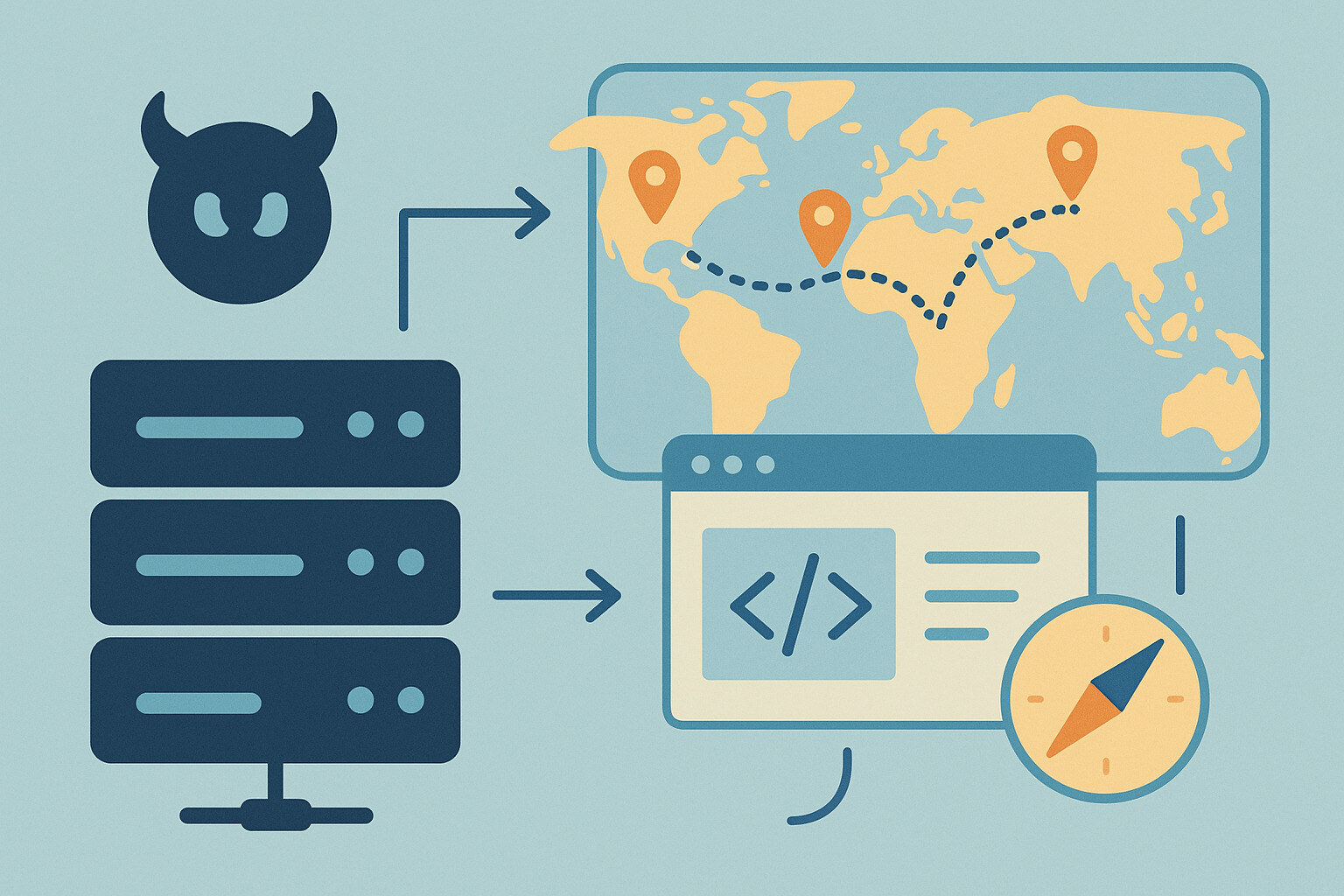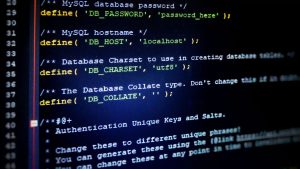Adding Location-Aware Functions for Better User Interaction
Geolocation is becoming a standard part of many web applications. Whether for personalized content, local services, or mapping, knowing where a user is can change how the app behaves. Integrating geolocation features in BSD-based web apps enables developers to leverage BSD’s stability and security while delivering responsive, location-aware services. BSD-based servers and platforms offer the tools needed to make this work smoothly and securely.
For developers working on BSD systems, the challenge is making sure the app can interact with browser-based location data, such as the postal code, use it responsibly, and handle it in real time. This adds another layer to web design, one that involves both front-end permission handling and back-end coordination.
When implemented correctly, geolocation creates a more responsive and personalized user experience. For example, a food delivery app can display nearby options instantly, while a travel website can adjust its suggestions based on the user’s current city. Effective location integration makes these features possible. Moreover, BSD offers a reliable and efficient foundation to run such geolocation-based services smoothly, ensuring consistent performance for users.
How Geolocation Works with Modern Web Browsers
Most geolocation in web apps begins at the browser level. Modern browsers support the navigator.geolocation API, which can get a user’s current position with just a few lines of JavaScript. Integrating geolocation features in BSD-based web apps ensures this location data can be securely and efficiently processed on the server side, making full use of BSD’s stability and performance. This API checks GPS, Wi-Fi, or IP data to estimate location.
The browser always requests permission before it shares location data. This behavior forms an essential part of the system and adds a crucial layer of privacy. Users actively choose whether to accept or deny the request, and apps need to handle both responses smoothly to avoid disrupting the experience.
After users grant permission, the system sends the data to the back end for storage or real-time processing. At this stage, BSD-based servers take over by processing the information, reacting to changes, and even triggering actions based on the contextual meaning of the location.
Choosing the Right Back-End Tools on BSD
BSD systems support a wide range of languages and frameworks, from PHP and Python to Node.js and Ruby. All of these can handle incoming geolocation data from the browser, making BSD a solid platform for apps needing location features.
For example, a Python Flask app running on FreeBSD can receive a JSON payload containing latitude and longitude. From there, it can use that data to query a map API, update a database, or send a custom message back to the user.
The flexibility of BSD systems allows developers to set up light or heavy tools depending on project needs. With secure networking and stable system resources, BSD keeps location-aware apps responsive even during high traffic.
Working with Geolocation APIs and Services
Geolocation data often requires proper interpretation. A pair of coordinates means little until you match it with real-world context. APIs such as Google Maps, OpenStreetMap, and HERE provide reverse geocoding, routing, and region-based insights, turning raw data into actionable information.
A BSD web app can send standard HTTPS requests to these APIs to retrieve useful details. Developers use libraries in common programming languages to simplify the process by managing authentication, parsing responses, and checking for errors. With this approach, apps can easily display maps, generate directions, or highlight nearby points of interest.
Using these services adds context to location data. Whether the app is identifying a user’s city or plotting a route to the nearest store, the integration of location APIs turns raw numbers into something actionable and user-friendly.
Setting Up Location Permissions and Front-End Interaction
The user’s browser handles geolocation permissions, but how the app responds to that request matters. If permission is denied, the app should fall back gracefully—maybe asking for manual input instead of breaking the workflow.
On the front end, developers typically use JavaScript to check whether the browser supports geolocation and then request access. When users approve the request, the system immediately stores the coordinates in a session, sends them through an API, or displays them directly in the user interface.
Good feedback improves the experience. A simple “Fetching your location…” message reassures users, while handling errors like timeouts or unsupported devices ensures fewer drop-offs. Even though the location data starts in the browser, thoughtful integration goes far beyond the initial request.
Using Location for Custom Content Delivery
Once the app knows where the user is, it can adjust what they see. Local news, weather updates, nearby services, and language preferences can all be tied to geography. This makes the app feel more relevant and easier to use.
A BSD-based news portal, for example, might highlight regional headlines for someone in the same state. A retail site could show stores within driving distance. These kinds of dynamic displays are made possible by checking the user’s location and adjusting the page before it loads fully.
This approach increases engagement. Instead of treating all users the same, geolocation adds context and personal relevance. That little adjustment often makes a big difference in how users respond and return to the site.
Logging, Privacy, and Respecting User Data
Any time personal data is collected, privacy needs to be a focus. Geolocation is no different. While the BSD system can log and store data securely, the web app should never overreach or store more than needed.
Users should be told what their location is used for and given a way to opt out. Temporary data storage, anonymization, and expiration settings can help meet legal and ethical standards. BSD servers often include strong firewall and audit tools to support this level of care.
Respecting data builds trust. Even if the technology can track location in great detail, that doesn’t mean it should. When apps treat this data carefully, users feel safer and more likely to grant permission again in the future.
Handling Real-Time Location Updates
Some web apps benefit from knowing not just where users are—but where they’re going. Real-time location tracking can be used in logistics, ride-hailing, delivery, and even event coordination. This adds complexity, but BSD systems can keep up.
Using WebSocket connections or AJAX polling, the app can send location updates from the client to the server at regular intervals. The server, built on BSD, can then update maps, notify other users, or recalculate results on the fly.
This kind of feature requires a strong network setup and efficient resource handling. BSD systems offer just that—reliable performance under load and tools for isolating tasks. Whether tracking one user or a thousand, real-time updates are handled smoothly.
Testing Location-Based Features in Development
Developing geolocation apps means testing for lots of different outcomes. What if the user is indoors? What if the browser denies permission? What if the GPS is slightly off? Each scenario needs to be handled gracefully in both front end and back end.
Many browsers let developers simulate location through their developer tools. This helps test different cities, countries, or error conditions without leaving the desk. On the BSD server side, mock requests can help simulate different use cases before going live.
Thorough testing creates stronger apps. By building and checking for different geolocation behaviors early, developers avoid last-minute bugs or broken sessions. This ensures the app works smoothly no matter where the user is or what device they’re using.
Bringing Local Context to Global Applications
Adding geolocation to BSD-based web apps opens up a better experience for users. Integrating geolocation features in BSD-based web apps connects global platforms with local relevance. Whether showing a nearby event, mapping a delivery route, or greeting someone in their language, location data adds a personal touch that users appreciate.










No Responses